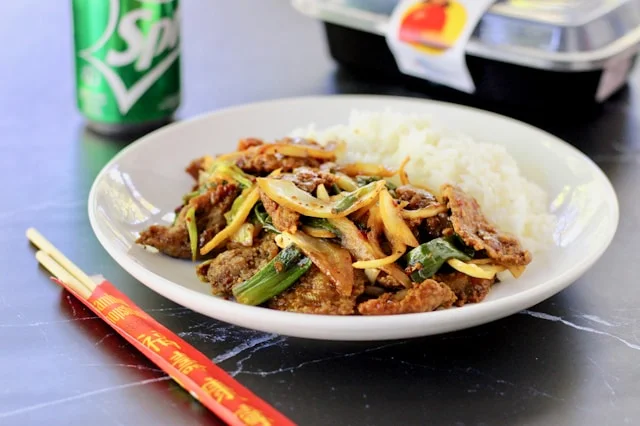China, with its rich culinary heritage, offers an unparalleled gastronomic journey. From bustling street markets to elegant dining establishments, the diverse flavors and regional specialties of Chinese cuisine are a food lover’s paradise. In this comprehensive guide, we delve into the culinary delights that make China a must-visit destination for any food enthusiast.
The Rich Tapestry of Chinese Cuisine
1. Regional Specialties
China’s vast geography and diverse climate have given rise to distinct regional cuisines, each with its own unique flavors and cooking techniques. The eight major culinary traditions are:
- Cantonese Cuisine: Known for its fresh ingredients and delicate flavors, Cantonese cuisine emphasizes seafood and dim sum. Must-try dishes include Char Siu (barbecue pork) and Har Gow (shrimp dumplings).
- Sichuan Cuisine: Famous for its bold and spicy flavors, Sichuan cuisine features the use of Sichuan peppercorns. Signature dishes include Mapo Tofu and Kung Pao Chicken.
- Shandong Cuisine: Characterized by its use of seafood and simple ingredients, Shandong cuisine highlights dishes like Braised Abalone and Sweet and Sour Carp.
- Jiangsu Cuisine: Known for its refined cooking techniques and presentation, Jiangsu cuisine offers dishes such as Lion’s Head Meatballs and Steamed Crab.
- Zhejiang Cuisine: Emphasizing freshness and seasonal ingredients, Zhejiang cuisine is best represented by dishes like West Lake Fish in Vinegar Gravy and Dongpo Pork.
- Fujian Cuisine: With a focus on soups and broths, Fujian cuisine includes dishes like Buddha Jumps Over the Wall and Ginseng Chicken Soup.
- Hunan Cuisine: Similar to Sichuan cuisine but with even hotter flavors, Hunan cuisine features dishes such as Chairman Mao’s Red Braised Pork and Spicy Chicken.
- Anhui Cuisine: Known for its use of wild herbs and simple methods, Anhui cuisine includes dishes like Braised Tofu with Crab Roe and Stewed Soft-shell Turtle.
2. Street Food Delights
China’s street food scene is a vibrant part of its culinary culture. Each region offers its own specialties, often sold from roadside stalls and night markets. Some must-try street foods include:
- Jianbing: A popular breakfast crepe made with wheat and grain flour, filled with egg, scallions, cilantro, and various sauces.
- Baozi: Steamed buns filled with a variety of ingredients, such as pork, beef, or vegetables.
- Roujiamo: Often referred to as the “Chinese hamburger,” this consists of a flatbread filled with seasoned, slow-cooked pork.
- Tanghulu: Skewered and candied fruits, typically hawthorn berries, with a crunchy sugar coating.
- Chuan’r: Skewered and grilled meats, often seasoned with cumin and chili powder.
3. Tea Culture
Tea holds a significant place in Chinese culture, both as a beverage and a social ritual. China’s diverse tea regions produce a variety of teas, each with distinct characteristics:
- Green Tea: The most common type, known for its fresh and delicate flavors. Notable varieties include Longjing (Dragon Well) and Biluochun.
- Oolong Tea: Partially fermented tea with complex flavors, such as Tieguanyin and Da Hong Pao.
- Black Tea: Fully fermented and robust, with popular types including Dianhong and Keemun.
- Pu-erh Tea: Aged and fermented, known for its earthy and rich taste.
Tea houses across China offer the perfect setting to experience the traditional tea ceremony, where one can learn about the intricate process of brewing and savoring tea.
4. Dining Etiquette
Understanding Chinese dining etiquette can enhance your culinary experience. Key points to remember include:
- Chopsticks: Use chopsticks correctly and avoid sticking them upright in your bowl of rice, as it resembles funeral rites.
- Toasting: The host usually initiates the first toast, and it’s customary to return the gesture.
- Sharing Dishes: Meals are often shared, with communal dishes placed in the center of the table.
- Seating Arrangements: The seating arrangement is hierarchical, with the guest of honor typically seated opposite the host.
Iconic Chinese Dishes
1. Peking Duck
Peking Duck is one of China’s most renowned dishes. Originating from Beijing, this dish features crispy skin and succulent meat, often served with thin pancakes, hoisin sauce, and sliced scallions. The preparation is meticulous, involving air-drying the duck and roasting it until the skin is perfectly crisp.

2. Xiaolongbao
These steamed soup dumplings from Shanghai are a culinary marvel. The delicate dough is filled with seasoned pork and a gelatinous broth that turns into soup when steamed. Eating them requires a careful technique to avoid spilling the hot broth.
3. Hot Pot
Hot Pot is a communal dining experience popular across China. Diners cook various ingredients, such as thinly sliced meats, seafood, and vegetables, in a simmering pot of broth. The broth can range from mild to extremely spicy, often customized with dipping sauces.
4. Kung Pao Chicken
A classic Sichuan dish, Kung Pao Chicken combines diced chicken, peanuts, and vegetables stir-fried with a flavorful sauce made from soy sauce, vinegar, and Sichuan peppercorns. Its balance of sweet, sour, and spicy flavors makes it a favorite among many.
5. Dim Sum
Dim Sum, a staple of Cantonese cuisine, includes a variety of bite-sized dishes traditionally served with tea. Popular items include Har Gow (shrimp dumplings), Siu Mai (pork dumplings), and Char Siu Bao (barbecue pork buns). Dim Sum is typically enjoyed during brunch and served from carts in bustling teahouses.
Culinary Adventures in China
1. Culinary Tours
For a deeper dive into Chinese cuisine, consider joining a culinary tour. These tours often include market visits, cooking classes, and guided tastings of local specialties. Destinations such as Chengdu, Guangzhou, and Xi’an are particularly known for their rich culinary heritage.
2. Cooking Classes
Many cities offer cooking classes where you can learn to make authentic Chinese dishes. These classes often include a trip to the local market to select fresh ingredients, followed by hands-on instruction from experienced chefs.
3. Food Festivals
China hosts numerous food festivals throughout the year, celebrating everything from specific ingredients to regional cuisines. Notable festivals include the Harbin International Ice and Snow Sculpture Festival, where you can enjoy hearty northeastern dishes, and the Qingdao International Beer Festival, offering a variety of seafood and brews.



